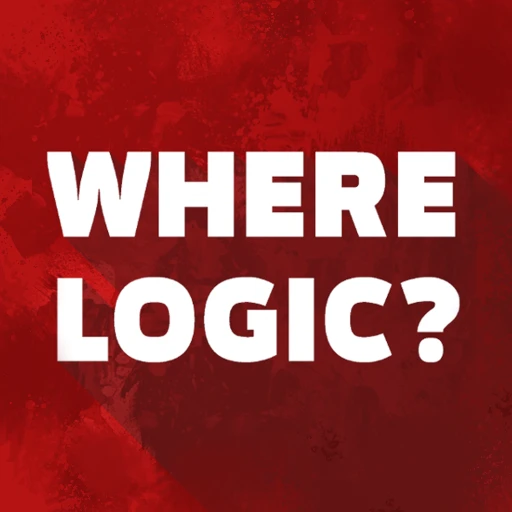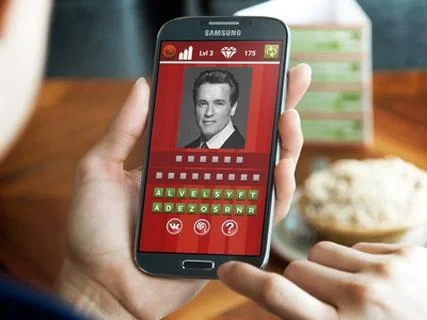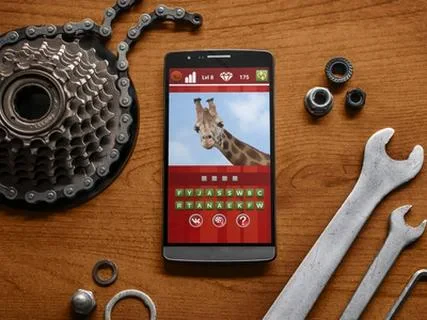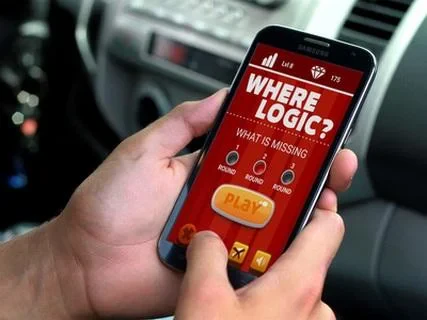 |
|
| Rating: 4.1 | Downloads: 5,000,000+ |
| Category: Trivia | Offer by: Canopy Solutions |
Where Logic? is an intriguing logic puzzle video game that falls into the brain-teaser genre, challenging players with spatial reasoning and problem-solving tasks. Its appeal lies in the satisfaction of conquering clever obstacles and discovering hidden patterns within seemingly complex configurations. The core experience involves manipulating blocks and shapes within designated areas to achieve specific goals, making each level a fresh mental challenge.
The gameplay experience for Where Logic? is engaging and often meditative, featuring minimalist visuals that emphasize the purity of the puzzles. The storyline is implicit, driving players through increasingly difficult levels, and its universal appeal lies in the fundamental human desire to solve problems and the subtle sense of accomplishment upon success.
Gameplay and Features
- [Core Gameplay Loop]: The core loop involves manipulating geometric blocks on a grid to fit specific patterns or fill designated spaces efficiently. Players rotate, move, and stack shapes to complete objectives, often aiming for minimal moves or achieving perfect placements to unlock bonuses or proceed to the next challenge.
- [Visuals or Art Style]: The graphics are typically simple, minimalist, and clean, often using flat colours and basic geometric shapes. The design style focuses on clarity, allowing players to easily perceive the game state and the relationships between different elements. Animations are usually smooth but unobtrusive.
- [Modes or Levels]: The game primarily features a single-player campaign with numerous levels of increasing difficulty. While lacking traditional multiplayer, the inherent competitive aspect allows players to challenge themselves for faster completion times. Each level acts as a distinct puzzle, ensuring high replayability by presenting unique solutions.
- [Controls or Interface]: Controls are generally intuitive and touch-friendly for mobile versions, often involving swiping to rotate or drag blocks, or simple tap-and-drag gestures. On desktop, keyboard shortcuts or mouse actions are common. The interface is usually clean and uncluttered, minimizing distractions and making it easy to focus on the puzzle at hand.
- [Customization or Power-ups]: Customization options might be minimal, focusing instead on visual elements provided by the game. Power-ups, while less common in core logic puzzle games, could potentially unlock temporary abilities or hints for particularly challenging levels, encouraging players to persist without getting stuck indefinitely.
- [Any Special Systems]: Some iterations might include a ‘Hint’ system to provide temporary visual cues or unlockables, like higher difficulty levels, bonus levels, or different visual themes for completed packs of levels.
How to Play
Beginner’s Guide:
- Step 1: Download and install the game application from your device’s app store or the official platform. Launch the game and start the initial tutorial levels if provided.
- Step 2: Observe the game board and the blocks presented. Use the on-screen controls (swipes or button presses) to rotate, move, or place blocks according to the objective displayed.
- Step 3: Complete the level by achieving the goal, which often involves matching patterns or filling the board completely. Progress through subsequent levels that introduce new block types or complexity.
Pro Tips:
- Look for symmetry and patterns: Often, the solution aligns with symmetrical shapes or common grid patterns visible on the board.
- Plan ahead with fewer moves: Try to visualize where blocks can be placed before moving them; completing levels with the fewest possible moves unlocks bonus stars or rewards.
- Don’t be afraid to use hints: If stuck on a particularly difficult level, using a hint (if available) can unlock progress, but saving these for genuinely challenging levels provides better value.
Similar Games
| Game Title | Why It’s Similar |
|---|---|
| Tetris |
Shares the spatial arrangement genre, requiring players to fit shapes into grids. Known for fast-paced action and increasing difficulty. |
| Lumines |
Appeals to the same type of players. Offers unique level designs and a stylized, minimalist visual style focused on clearing patterns. |
| Monument Valley |
Popular among spatial reasoning fans. Has mind-bending mechanics and an aesthetically pleasing design, often involving perspective shifts. |
Frequently Asked Questions
Q: Are the puzzles randomly generated each time, or are they fixed levels?
A: Where Logic? typically features fixed levels designed by the developers. While you might encounter variations or sequels with procedural generation, the standard game offers a set sequence of increasingly difficult puzzles to solve.
Q: Is “Where Logic?” primarily designed for casual players, or does it have depth for dedicated puzzlers?
A: Where Logic? has broad appeal but offers significant depth. The game provides a gentle learning curve for beginners, yet contains hundreds of challenging levels designed specifically for dedicated logic puzzle enthusiasts seeking strategic complexity.
Q: What happens if I get stuck on a level for too long?
A: The game usually provides a “Hint” system, which might be limited initially but often unlocks more features or becomes available later in the game. This helps players avoid being completely stuck, although saving hints for challenging levels is recommended to maximize score potential.
Q: Are there different ways to complete a level, or is there only one solution?
A: While there is typically a specific objective required for completion (e.g., matching a target pattern), many logic puzzles in “Where Logic?” have multiple valid ways to achieve the goal depending on your chosen strategy. This allows for creative player interpretation and different approaches.
Q: Is “Where Logic?” available on multiple platforms, and what are the differences?
A: “Where Logic?” was originally developed as a mobile game (Android/iOS) but has likely been ported to other platforms like PC or web portals. Differences might include controller support for PC versions or slight adjustments in controls and resolution scaling across platforms.
Screenshots
 |
 |
 |
 |
